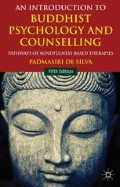Abstract
We examined the relationship between perception (saááā) and thinking (vitakka) in Chapter 3, in this chapter we are examining the very important relationship between thinking and feeling vedanā). The release of a recent work, Thinking About Feeling1 by Robert Solomon, is a significant landmark in the current philosophy of mind and emotion studies. Solomon was a pioneer in emotion studies and continued to write with freshness and vitality until his untimely death. A memorial volume to honour him, entitled Passion, Death and Spirituality (ed. K. Higgins and D. Sherman) was released by Springer in July 2012. In Thinking About Feeling he assembled together some of the finest contributions to emotion studies. This chapter, while working on the themes that emerge from this book on thinking and feeling, offers a Buddhist perspective on the central issues of Thinking About Feeling — the growing chasm among cognitive theories, with a focus on thoughts and appraisals, and the physiological arousal theories, with a focus on the body and feelings. John Deigh, who wrote the first chapter in the book, describes a basic conflict in emotion theories, and says that a major issue in emotion studies is to reconcile what may be described as the ‘ideogenic’ view of Freud with the ‘somatogenic’ view of James. He writes, ‘James’ ideas are the source of the view that one can fruitfully study emotions by studying the neurophysiological processes that occur with experience of them.
Hysterics behave as if anatomy did not exist
(Sigmund Freud)
I now proceed to urge the vital point of my whole theory, which is this: If we fancy some strong emotion and then try to abstract from our consciousness of it all the characteristics of bodily systems, we find we have nothing left behind, no ‘mind-stuff’ out of which the emotion could be constituted, and that a cold and neutral state of intellectual perception is all that remains
(William James)
Just as friends, two bundles of reed were to stand one supporting the other, even so consciousness is dependent on name and form (physical and mental phenomena) and name and form on consciousness. If friend, I were to pull towards me one of those sheaves of reed, the other would fall.
(Kindred Sayings, II, 114)
Access this chapter
Tax calculation will be finalised at checkout
Purchases are for personal use only
Preview
Unable to display preview. Download preview PDF.
Notes
Robert C. Solomon, ed., 2004b, Thinking About Feeling, Oxford University Press, Oxford.
John Deigh, 2004, ‘Primitive Emotions’, in Robert C. Solomon, ed., Thinking About Feeling, Oxford University Press, Oxford, p. 25.
Robert C. Soloon 2001 True to Our Feelings Oxford University Press Oxford p. 85
Candace Pert, 1997, Molecules of Emotion, Scribner, New York.
Daniel Goleman, ed., 2003, Destructive Emotions, Bloomsbury, London.
J. Kabat-Zinn, 1990, Full Catastrophe Living, Delta, New York, 48–9.
Nyanaponika, Mahathero, 1983, Contemplation of Feelings, Buddhist Publication Society, Kandy, p. 7.
Padmasiri de Silva 1995, ‘Theoretical Perspectives on Emotions in Buddhism’, in Joel Marks and Roger Ames, eds., Emotions in Asian Thought, State University of New York Press, Albany, PP. 109–20.
J. R. Averill, 1980, ‘Emotion and Anxiety: Sociocultural, Biological and Psychological Determinants’, in Rorty, A.O., ed., Explaining Emotions, University of California Press, Berkley, p. 38.
Robert C. Solomon, 1973, ‘Emotions and Choice’, Review of Metaphysics, 27, 20–41.
William James, James, William, 1890, 1918, 1950, The Principles of Psychology, Dover Publications, New York, vol. 1, p. 424.
J. Kabat-Zinn, 2005, Coming to Our Senses: Healing Ourselves and the World Through Mindfulness Practice, Piatkus, New York, p. 118.
Nyanaponika Mahathero, 1973, The Heart of Buddhist Meditation, Samuel Wiser, New York.
M.R. Bennett and P.M.S. Hacker, 2003, Philosophical Foundations of Neuroscience, Blackwell, Oxford, p. 203.
G.E. Myers, 1987, William James, His Life and Thought, Yale University Press, New Haven, CT.
R. M. Gordon, 1982, The Structure of Emotions: Investigations in Cognitive Philosophy, Cambridge University Press, Cambridge, p. 92.
P.E. Griffith, 1997, What Emotions Really Are: The Problem of Psychological Categories, Chicago University Press, Chicago, p. 100.
Jerome Neu, 1977, Emotion, Thought and Therapy, Routledge Kegan Paul, London.
Jerome Neu, 2000, An Emotion Is An Intellectual Thing, Oxford University Press, Oxford.
Padmasiri de Silva, 2005a, An Introduction to Buddhist Psychology, 4th edition, Palgrave Macmillan, Basingstoke.
Sumedha, Ahahn, 1992, The Four Noble Truths, Amaravati Publications, Hemel, Hempstead, p. 64.
Paul Ekman, 2003, Emotions Revealed, Weidenfeld and Nicolson, London, p. 73.
Author information
Authors and Affiliations
Copyright information
© 2014 Padmasiri de Silva
About this chapter
Cite this chapter
de Silva, P. (2014). Towards a Holistic Psychology: Blending Thinking and Feeling. In: An Introduction to Buddhist Psychology and Counselling. Palgrave Macmillan, London. https://doi.org/10.1057/9781137287557_10
Download citation
DOI: https://doi.org/10.1057/9781137287557_10
Publisher Name: Palgrave Macmillan, London
Print ISBN: 978-1-137-28754-0
Online ISBN: 978-1-137-28755-7
eBook Packages: Palgrave Social Sciences CollectionSocial Sciences (R0)

